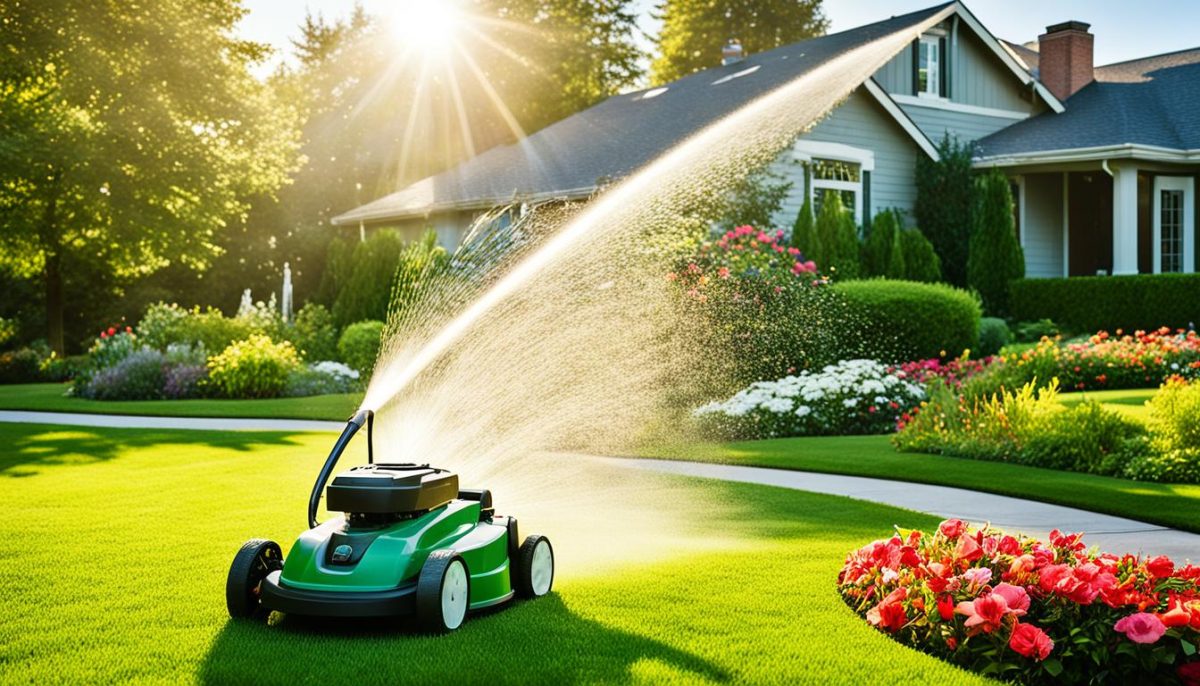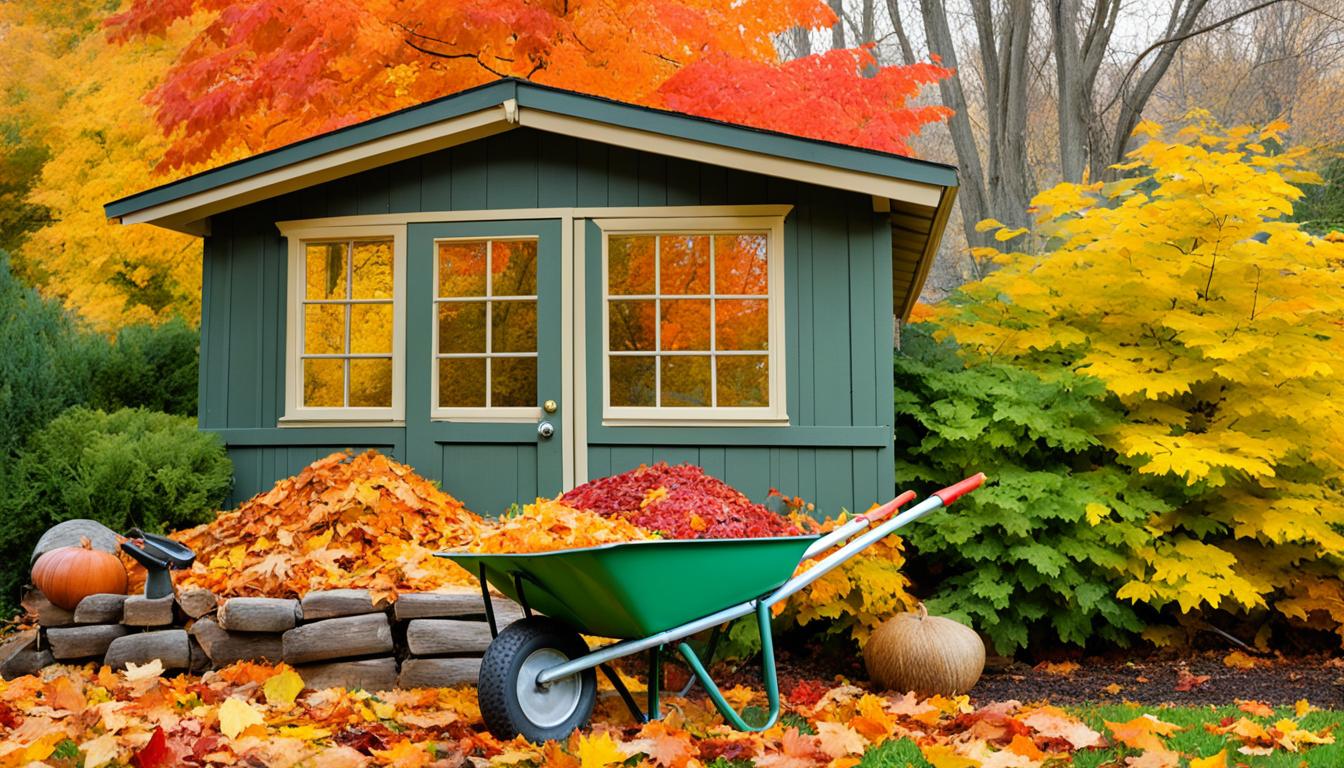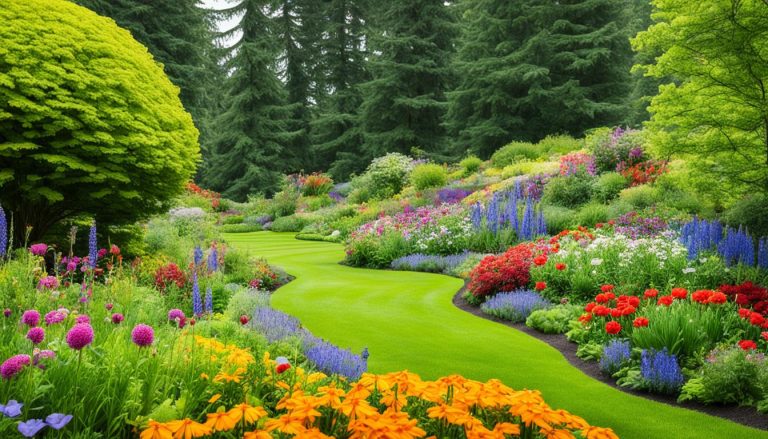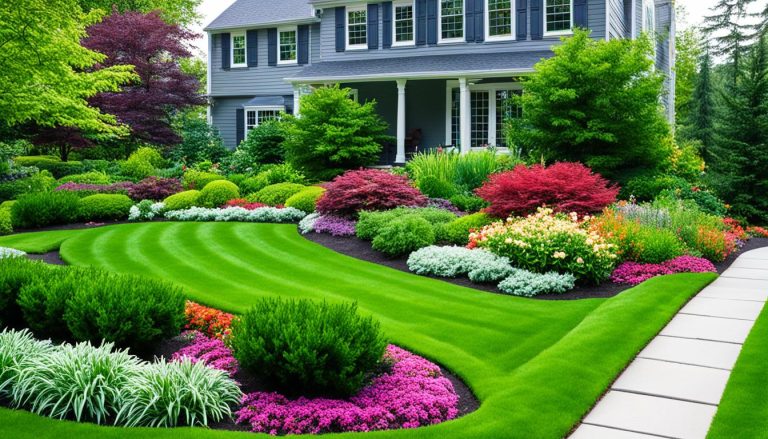Seasonal Serenity: Landscape Maintenance for Every Month
Welcome to our expert guide on landscape maintenance for your outdoor spaces. Whether you have a small garden, a sprawling lawn, or a cozy patio, maintaining your landscape throughout the year is essential for creating a serene and beautiful environment.
In this comprehensive guide, we’ll walk you through the steps and techniques to keep your outdoor spaces pristine and achieve seasonal serenity. From spring to winter, each season brings unique challenges and opportunities for landscape maintenance.
With our expert tips and insights, you’ll learn how to nurture your plants, protect your hardscape elements, and create an inviting atmosphere in your outdoor areas. Whether you’re a seasoned gardener or just starting your landscape journey, this guide is designed to help you bring out the best in your outdoor spaces.
So, grab your gardening tools and join us as we delve into the world of landscape maintenance. From blooming beauties in spring to colorful transitions in fall, we’ll cover it all to ensure your outdoor spaces thrive in every season.
Spring Landscape Maintenance: Blooming Beauties and Fresh Starts
As the weather warms and nature awakens, it’s time to give your garden the attention it deserves. Spring is a season of new beginnings, and with proper landscape maintenance, you can ensure your outdoor spaces are ready to flourish with blooming beauties and fresh starts.
One of the crucial tasks for spring landscape maintenance is pruning. This process involves removing dead or diseased branches, shaping shrubs, and encouraging healthy growth. Proper pruning not only enhances the aesthetic appeal of your garden but also promotes the overall health of your plants.
Alongside pruning, fertilizing your soil is essential to provide the necessary nutrients for vibrant growth. Choose a high-quality organic fertilizer and apply it according to the package instructions. Remember to water the soil thoroughly after fertilization to ensure the nutrients penetrate deep into the roots.
Preparing your soil for the upcoming planting season is another key aspect of spring landscape maintenance. Start by clearing any debris, weeds, or spent plants from your garden beds. Loosen the soil with a garden fork or tiller, and amend it with compost or organic matter to improve its texture and fertility.
Spring Landscape Maintenance Checklist:
- Prune trees and shrubs
- Fertilize the soil
- Prepare garden beds
- Inspect and repair irrigation systems
- Remove winter mulch
- Apply fresh mulch
- Monitor for pests and diseases
Remember to inspect and repair your irrigation systems to ensure proper watering throughout the growing season. Remove the winter mulch from your garden beds and replace it with a fresh layer to suppress weed growth and conserve moisture.
Regularly monitor your plants for signs of pests and diseases. Early detection allows for prompt treatment, minimizing the risk of widespread damage. Consider organic pest control methods and beneficial insects to maintain a balanced ecosystem in your garden.
Spring is a time of renewal, and by investing in proper landscape maintenance, you can create a vibrant and thriving garden that brings joy throughout the season.
| Landscape Maintenance Tasks | Benefits |
|---|---|
| Pruning | – Promotes healthy growth – Enhances aesthetics |
| Fertilizing | – Provides essential nutrients – Supports vibrant blooms |
| Soil Preparation | – Improves soil fertility – Enhances plant growth |
| Irrigation Maintenance | – Ensures proper hydration – Prevents plant stress |
| Pest and Disease Control | – Preserves plant health – Prevents widespread damage |
Summer Landscape Maintenance: Thriving Under the Sun
Embrace the sunny season with our expert guide to summer landscape maintenance. As the temperature rises, it’s crucial to ensure your outdoor spaces thrive under the sun. By following these essential tips and techniques, you can keep your plants hydrated, control pests, and maintain a healthy lawn.
1. Hydrate Plants Effectively
The scorching summer heat can quickly dry out your garden, putting your plants at risk. To keep them well-hydrated, be sure to water deeply and infrequently. This encourages their roots to grow deeper, resulting in a more resilient and healthy plant. Consider using drip irrigation systems or soaker hoses to ensure water reaches the root zone efficiently.
2. Control Pests Naturally
Pesky pests can wreak havoc on your summer landscape. Instead of relying on harmful chemicals, opt for natural pest control methods. Introduce beneficial insects such as ladybugs and lacewings to combat common garden pests like aphids and caterpillars. Additionally, use organic pest deterrents like neem oil or garlic spray to protect your plants without harming the environment.
3. Maintain a Luscious Lawn
A vibrant and healthy lawn is the centerpiece of a beautiful summer landscape. Regular mowing, but not too short, promotes strong grass growth and discourages weeds. Don’t forget to water your lawn deeply but infrequently, preferably during the early morning hours, to minimize evaporation. Regularly inspect your lawn for any signs of disease or pest infestation and take immediate action, if necessary.

4. Maximize Outdoor Enjoyment
The summer months are perfect for outdoor gatherings and relaxation. Enhance your outdoor enjoyment with these tips:
- Create shaded areas with pergolas, umbrellas, or shade sails to shield yourself from the intense sun.
- Install outdoor lighting to extend your evenings and create a cozy ambiance.
- Add comfortable seating and outdoor furniture to create inviting spaces for socializing and relaxation.
- Introduce colorful and fragrant summer flowers to elevate the aesthetic appeal of your outdoor areas.
By following these summer landscape maintenance practices, your outdoor spaces will thrive under the sun, providing you with a beautiful and enjoyable environment all season long.
Fall Landscape Maintenance: Preparing for a Colorful Transition
As the leaves change color, it’s time to focus on fall landscape maintenance. The transition from summer to autumn brings a vibrant display of hues to your outdoor spaces. To ensure your garden remains beautiful throughout the season, proper care and preparation are essential.
Aeration: Nurturing Your Lawn
One crucial step in fall landscape maintenance is aeration. This process involves creating small holes in the soil to allow for better air, water, and nutrient circulation. Aeration helps your lawn breathe and receive the necessary nourishment, promoting healthy root growth.
To aerate your lawn:
- Use a garden fork or aerating machine to create holes in the soil.
- Ensure the holes are spaced evenly across your lawn.
- Consider overseeding after aeration to fill in any bare patches.
Mulching: Protecting Your Plants
Mulching is another vital aspect of fall landscape maintenance. By applying a layer of mulch around your plants, you create a protective barrier against temperature fluctuations and weed growth. Mulch also helps retain moisture in the soil, reducing the need for frequent watering.
To mulch effectively:
- Choose organic mulch materials such as shredded leaves, straw, or wood chips.
- Spread a layer of mulch around the base of your plants, ensuring it doesn’t touch the stems or trunk.
- Maintain a thickness of 2-3 inches for optimal insulation and weed suppression.
Proper Plant Care: Setting the Stage for Spring
Preparing your plants for winter is crucial to their survival and future growth. Fall is the ideal time to prune certain shrubs and trees and remove any dead or diseased branches. Pruning not only improves the overall appearance of your landscape but also promotes healthy regrowth in the spring.
When conducting fall pruning:
- Use sharp, clean pruning tools to prevent the spread of diseases.
- Focus on removing any damaged or crossing branches.
- Avoid major pruning on evergreen varieties, as they may struggle to recover during the colder months.
Capturing the Colors: Enhancing Aesthetic Appeal
To create a colorful transition in your outdoor spaces, consider adding fall-blooming plants to your garden. These include chrysanthemums, asters, and ornamental grasses, which showcase vibrant hues and textures that complement the changing foliage.
“Fall is a season of transformation, and taking care of your landscape ensures a seamless and awe-inspiring experience. By following these fall landscape maintenance practices, you’ll be able to create a picturesque and vibrant outdoor space that transitions beautifully into the cooler months.” – Jane Roberts, Landscape Expert
Winter Landscape Maintenance: Nurturing and Protecting in the Cold
As the winter season settles in, it’s essential to prioritize landscape maintenance to ensure your outdoor spaces remain healthy and protected during the cold weather. By following a few key steps, you can nurture your plants and hardscape elements, safeguarding them against the harsh winter conditions.
Start by protecting your plants from freezing temperatures and frost damage. Consider covering delicate plants with burlap or frost blankets to provide insulation. It’s also crucial to continue watering your plants, even during the colder months. While they may not require as much water as during the summer, it’s important to keep the soil consistently moist to prevent dehydration.
Winter pruning is another vital aspect of landscape maintenance. Pruning your trees and shrubs during this time promotes healthy growth and removes any diseased or damaged branches. Additionally, it’s wise to trim any overhanging branches that could pose a risk of breaking under the weight of snow or ice.
Lastly, don’t forget to address snow removal from your outdoor spaces. Clear snow from walkways, driveways, and patios promptly to prevent accidents and damage. Be cautious when using de-icers, as some products may be harmful to your plants or hardscape. Opt for environmentally friendly alternatives to protect both your landscape and the surrounding environment.







